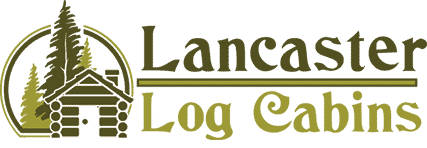Investing in Park Model Homes: Your Essential Guide
Thinking about investing in park model homes? You’re not alone. These compact, stylish homes are rapidly gaining traction among investors looking for affordable, flexible, and potentially high-return real estate opportunities.
However, like any investment, understanding the financials, risks, and management needs is crucial to making informed choices. Lancaster Log Cabins, with 35 years of experience building 100% timber park model homes, has the experience and knowledge to speak with authority.
Is renting out park model homes as a home or vacation rental a viable business for you? Here are a few key considerations to help you determine if park model homes are a goodright fit as an investment.
Table of Contents
What Are Park Model Homes?
Park model homes are small, transportable homes usually under 400 square feet, designed for seasonal or permanent living. They are built on a single chassis, making them easy to move and place on leased or owned land.
What sets them apart? They’re not mobile homes—park model homes often feel like cozy cottages, perfect for vacation rentals or affordable housing solutions. As a result, park model homes are better built and sturdier than mobile homes, and quality park model homes are constructed with high-quality materials.
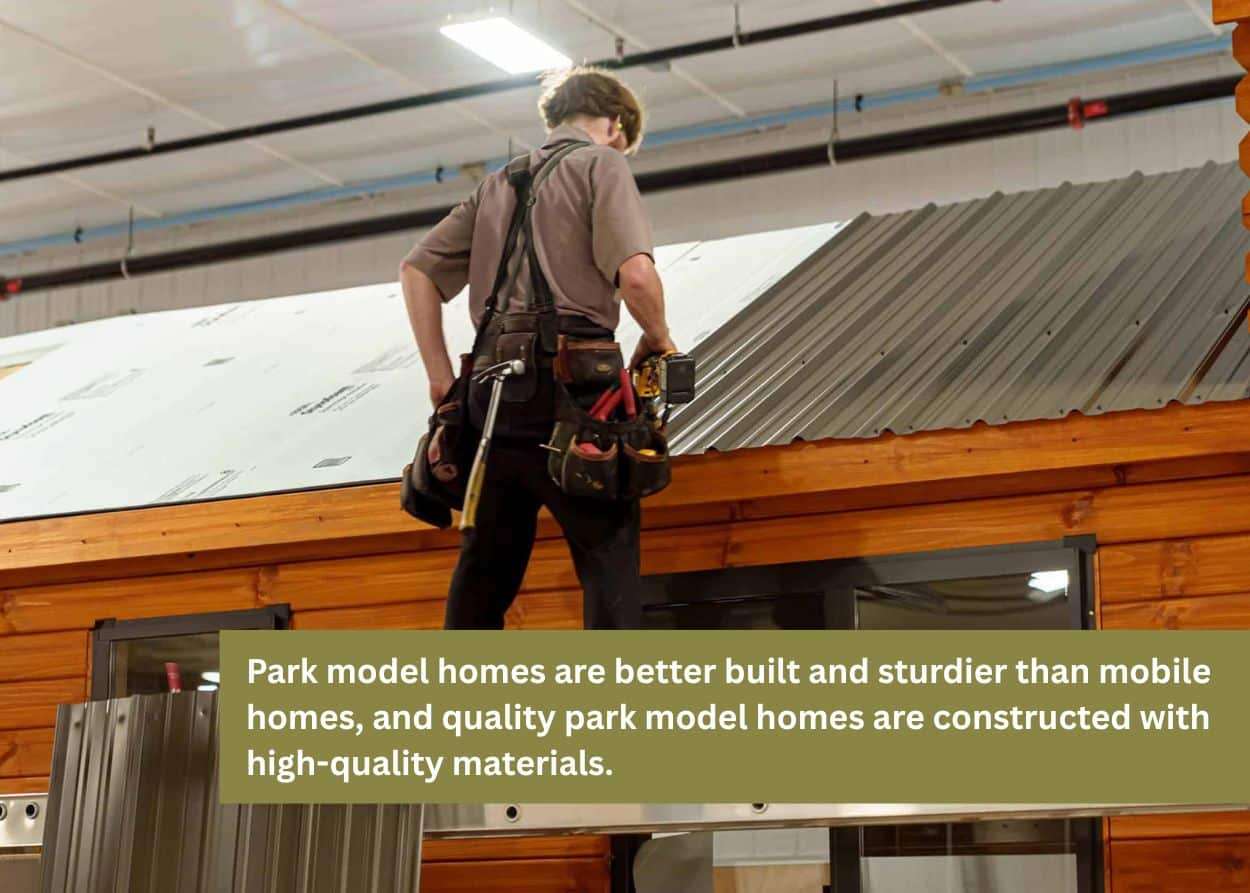
The difference in construction between park models and mobile homes lies in the specific building standards they adhere to. Mobile homes fall under building codes administered by the U.S. Department of Housing and Urban Development (HUD). Park model homes, on the other hand, are regulated by the American National Standards Institute (ANSI) A119.5, which governs building standards for recreational vehicles.
Ways to Invest in Model Homes
Park model homes can be an investment opportunity, whether you’re looking to buy a single unit for personal use or multiple units to generate income through the seasonal rental market. Here are business opportunities from owning park model homes:
- Vacationing Market: Park model homes rented out as vacation stays, either listed privately or as Airbnbs, eco-tourism destinations or campground chalets with several park model homes on a campground property that you own.
- Seasonal Rentals: Some people just want to get away from home for a while, whether to escape the winter, a family taking a long-term vacation, or even a writer looking for a quiet place to finish that novel. A park model home is the ideal space for a seasonal rental.

- Long-Term Rentals: Park model homes can also be used as long-term housing for retirees, those looking to downsize, and remote workers looking for something stylish and affordable to stay at.
Why Investors Love Park Model Homes
Renting out a space can be a lucrative business, though the cost of entry can be high, such as buying and furnishing a home. Park model homes are an unconventional way to get into the business. Some of the features of park model homes that attract investors include:
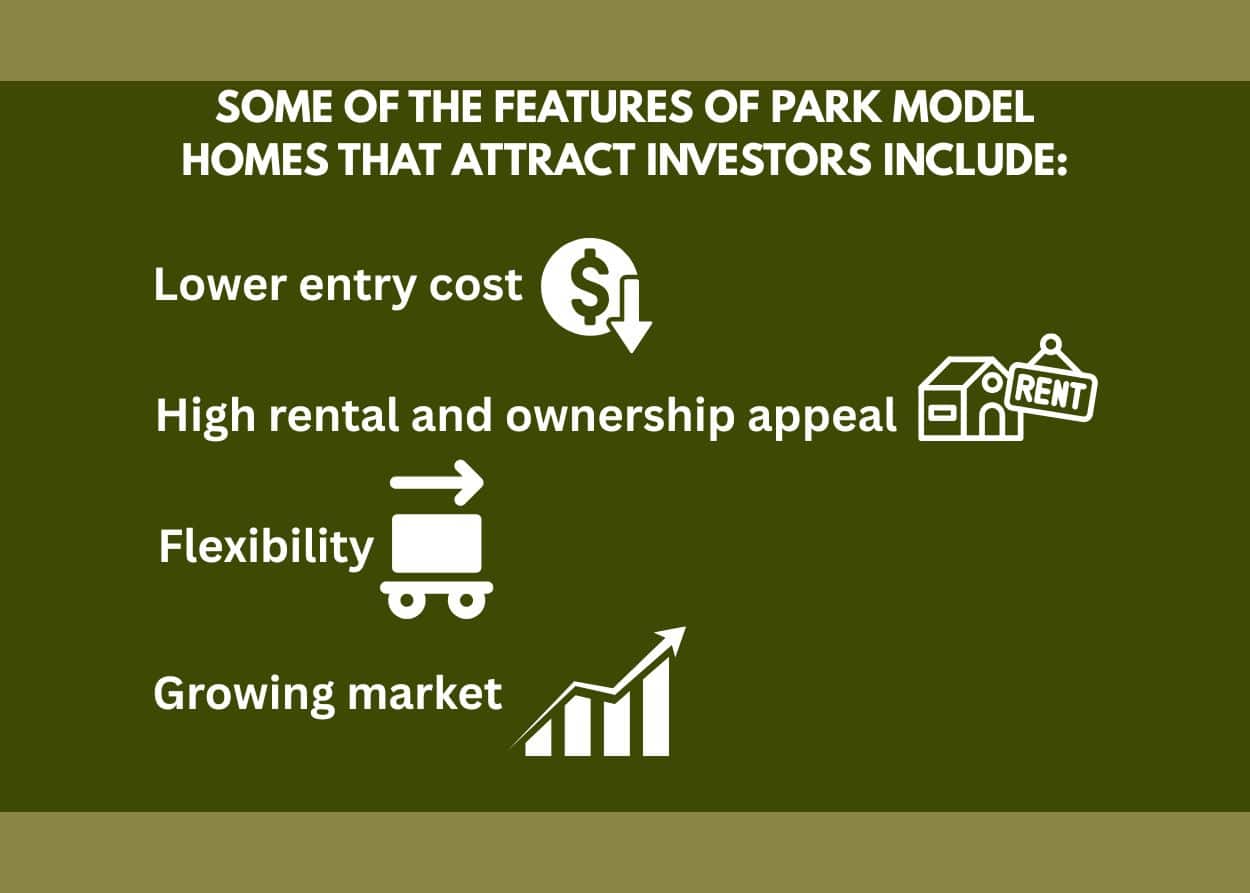
- Lower entry cost: Compared to traditional homes, you can invest in a park model home with a fraction of the capital, with different, shorter loan terms, such as RV loans, compared to conventional home loans.
- High rental and ownership appeal: Their size and charm attract vacationers and retirees looking for unique, affordable stays or those looking to downsize.
- Flexibility: Can be moved or sold more easily than standard homes. And since it’s a home on wheels, it can be sold and driven away!
- Growing market: Rising interest in tiny homes and affordable housing supports steady demand.
What’s the Cost and Potential ROI of Park Model Homes?
From the initial purchase of the assets to handling paperwork, there are additional costs associated with owning a park model home. Here are some expected costs and potential returns:
Upfront costs: Expect to pay between $40,000 and $100,000 for a high-quality park model home, depending on its size, materials, and level of customization. Don’t forget to budget for:
- Land purchase or lease fees: You may be the proud owner of a brand new park model home, but you still need to park it somewhere, either on leased land or property that you’ve purchased.
- Utility hookups (electric, water, sewer, internet): If you’re parking it at an RV park or campground, you’ll likely have the hookups available, which is an extra set of overhead costs if you’re renting the home to someone else. Remember to consider any additional costs you may incur from connecting utilities if you’re parking on undeveloped land.
- Permits and setup costs: You will likely need a permit for a park model home, especially if you plan to park it on a residential property. Zoning authorities and HOAs would consider it an accessory dwelling unit and require compliance. HOAs might even object to it on principle or aesthetics, so it’s a good idea to check whether the park model home you intend to purchase will run afoul of any rules.
- Insurance and taxes: Like any property, you’ll need home insurance, though in the case of park model homes, you’re more likely looking at RV insurance. Your premium will be based on factors such as the location of your home, its value, condition, coverage, deductible, claims history, and whether you can bundle your insurance with other policies, such as auto or life insurance. The good news? It’s relatively inexpensive, costing around $1,500 per year.
Potential returns: As a business investment, vacation rental income can vary widely based on location and season, but it’s certainly on an upward trend, thanks to pioneers like Airbnb and Vrbo. Here are some estimates:
- Rental rate: Rates can vary based on location and amenities. For example, West Boggs Park in Loogotee, IN, rents out its park model cabins for $122 a night, while Buttonwood Camp in Mifflintown, PA, charges between $160 and $210 a night, depending on whether it’s off-peak, in-season, or during a holiday.
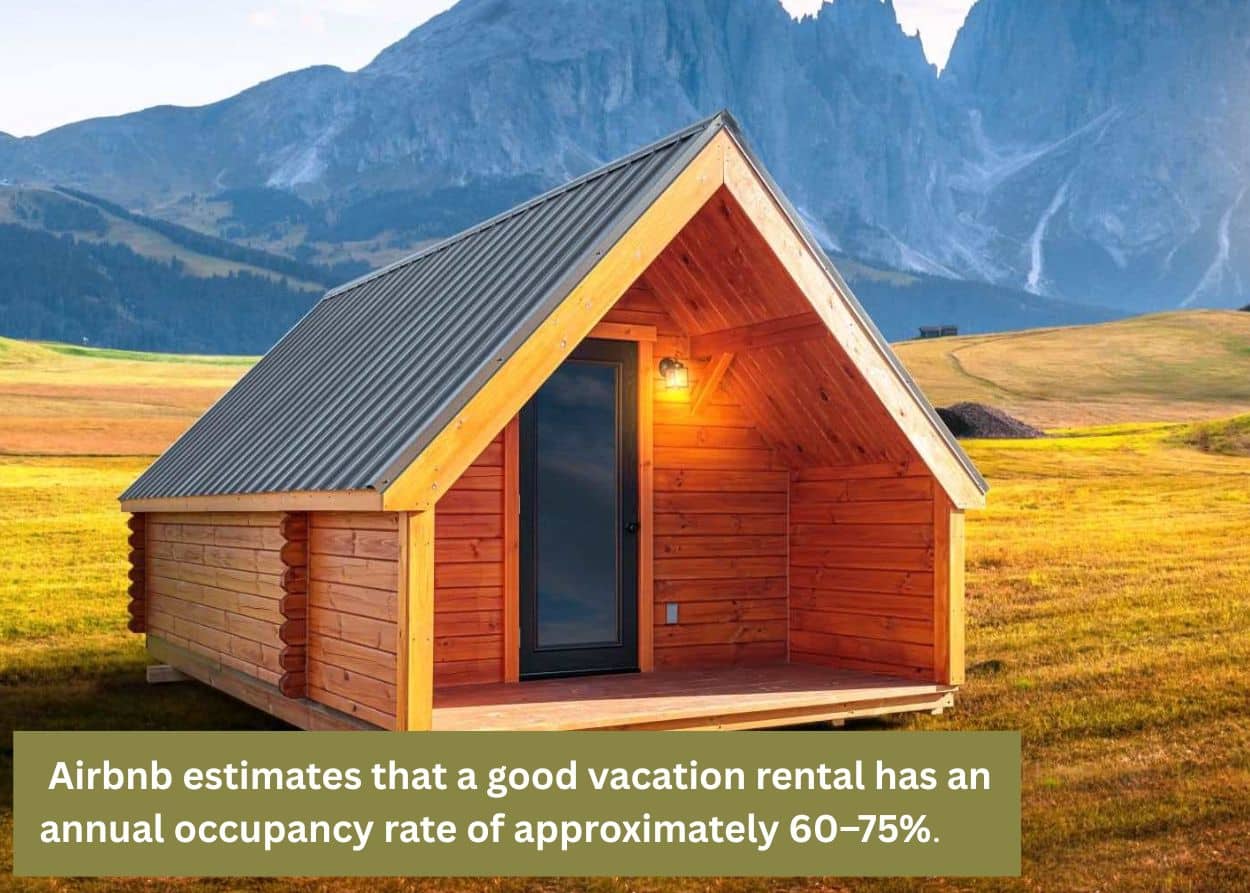
- Occupancy rate: Airbnb estimates that a good vacation rental has an annual occupancy rate of approximately 60–75%. If you’d like to dive deeper into the math, here’s an article about calculating your potential occupancy rate.
- Gross rental income: $21,900–$41,000 per year.
After expenses, investors often see net returns in the 8%–15 % range, with higher returns in peak locations.
Best Markets for Park Model Home Investments
Because vacationing in a park model home is all about the scenery, location makes all the difference in how successful your business can be. Park model homes thrive in:
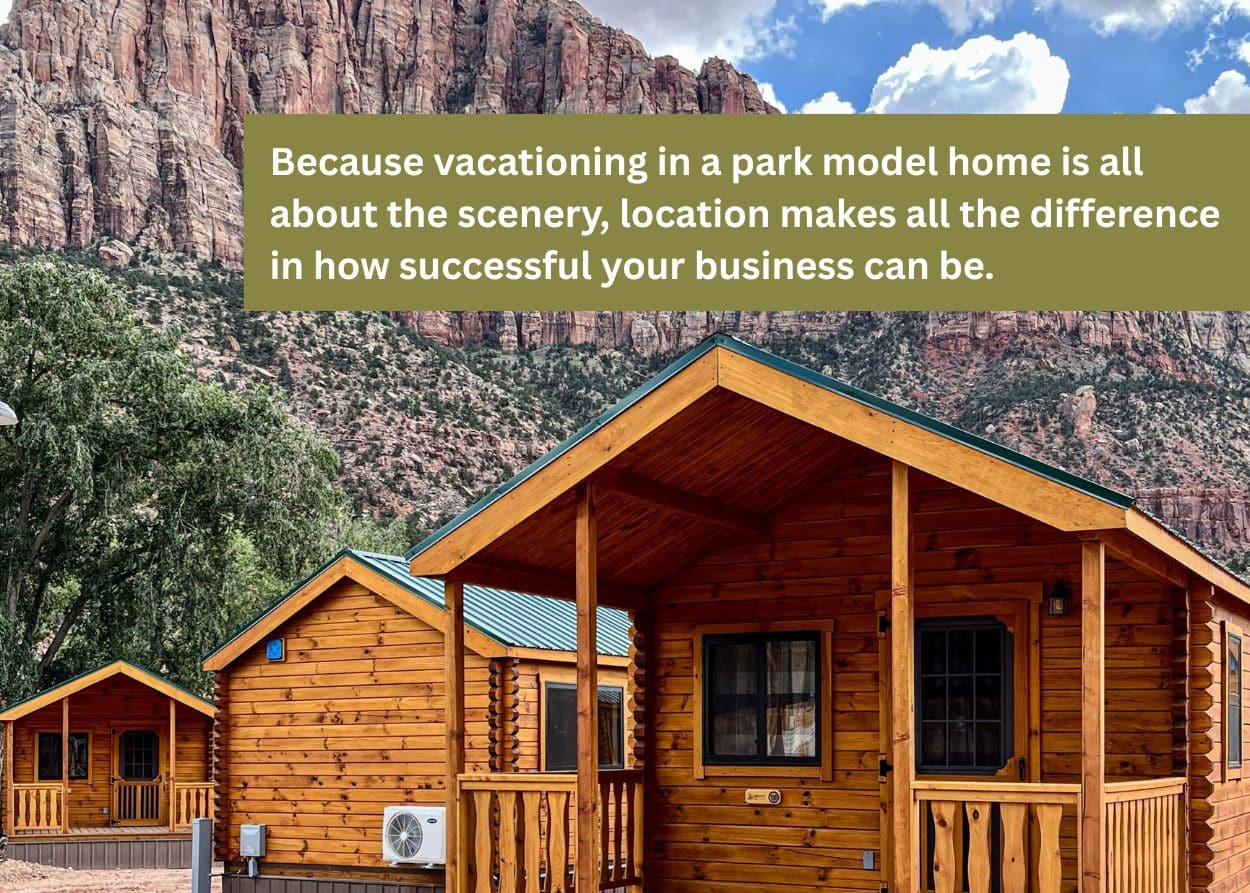
- Scenic vacation areas: Mountains, lakes, beaches—places people want to escape to.
- Growing retirement communities: Affordable downsizing options attract retirees.
- Popular tourist hubs: Proximity to attractions ensures consistent rental demand.
Here are some examples of where park model homes make great opportunities:
- The Smoky Mountains, stretching across Tennessee and North Carolina, provide year-round tourism with strong peak seasons. Outdoor activities in the area include fishing, hunting (though not in the national park itself), and hiking, while nearby towns such as Pigeon Forge, TN and Cherokee, NC offer more socially-focused events such as shopping, dining, and resorts.
- Coastal Florida’s warm climate attracts snowbirds and vacationers. Having a vacation spot right next to the beach is already an attractive option, and you can enhance the experience with bonuses like proximity to Orlando’s theme parks, stunning views, or rocket launches and landings by the Space Coast.
- The Great Lakes regions of Illinois, Indiana, Michigan, Minnesota, New York, Ohio, Pennsylvania, Wisconsin, and Ontario are popular destinations for spring and summer retreats, whether for solo travel or family vacations. During the fall, stunning fall colors dominate the area, providing the perfect backdrop for wine tastings at the numerous wineries surrounding the region.
- National parks or recreational areas provide a steady influx of visitors, with almost guaranteed maximum occupancy during peak seasons. The closer you are to the park entrances, the better the opportunities for occupancy and premium rates.
Investment Risks—And How To Protect Yourself
No investment is risk-free. Here are common park model home pitfalls and how to avoid them:
- Seasonality: Rental income may decrease during off-season periods.
Tip: Winterize the home for a comfortable long-term residency, or if you’re renting out, offer discounted long-term stays for year-round appeal.
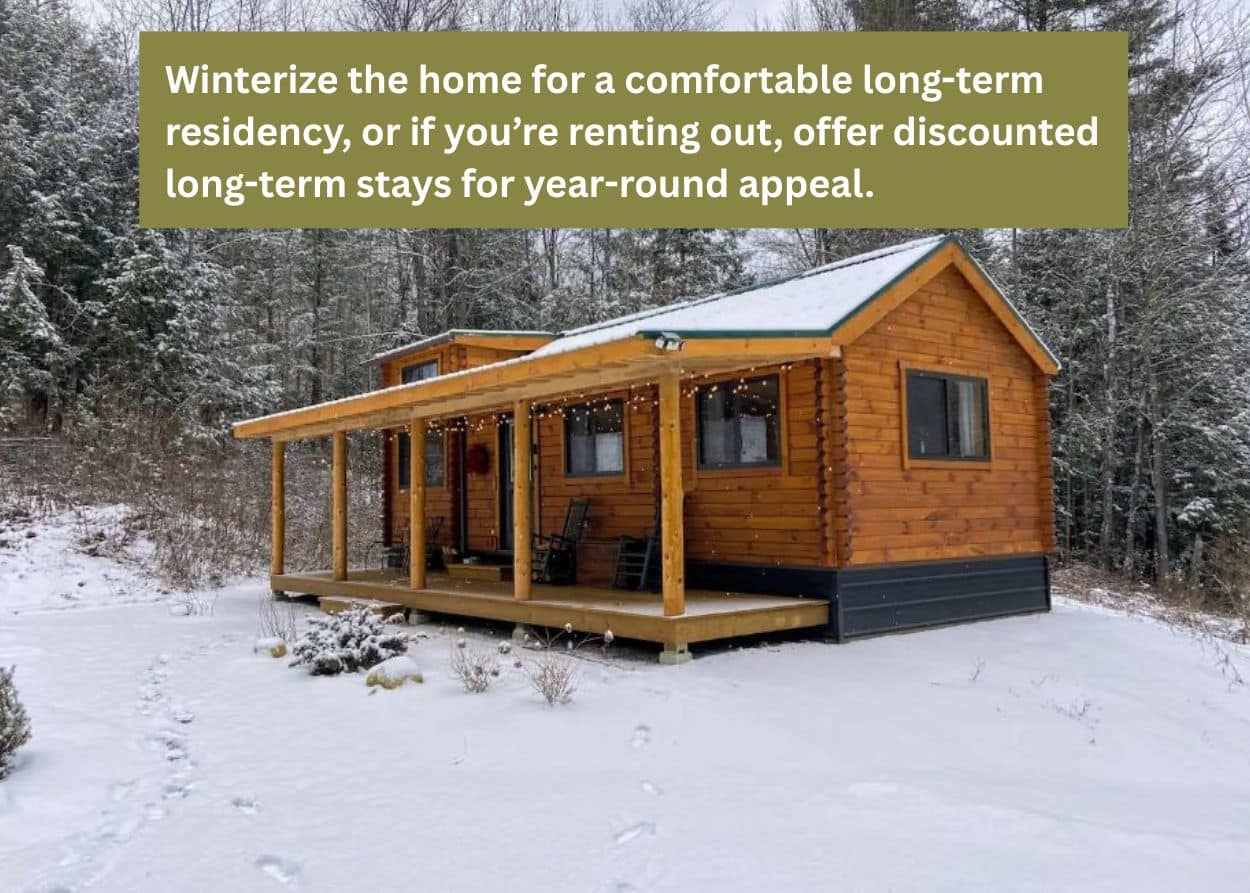
- Zoning and regulations: Some areas restrict park model homes or short-term rentals.
Tip: Research local zoning laws and HOA rules before making a purchase. - Maintenance surprises: Wood construction requires upkeep, especially outdoors.
Tip: Schedule regular inspections and budget for maintenance. - Land tenure: Leasing land can pose risks if the lease is terminated.
Tip: Secure long-term leases or buy land outright when possible.
Ownership Considerations for Investors
- Land ownership vs. leasing: Owning land adds equity but increases upfront costs; leasing may reduce capital but adds risk.
- Property management: Decide if you’ll self-manage or hire a local company to handle bookings, cleaning, and maintenance.
- Financing: Park model homes can often be financed via personal loans, RV loans, or specialized lenders. Interest rates and terms vary, so shop around to find the best options.
Tax Benefits and Financial Planning
Don’t forget that as a business owner, you can deduct certain business expenses from your taxes. Investors may benefit from:
- Depreciation deductions on the home and improvements.
- Expense write-offs for maintenance, utilities, and management fees.
- Capital gains advantages when selling, depending on ownership duration.
Of course, Lancaster Log Cabins isn’t in a position to give actual tax advice—these are merely suggestions that you could look into. Always consult a tax professional for personalized advice.
Conclusion
With rising interest in tiny homes, affordable vacation stays, and flexible living options, park model homes are positioned for steady demand. Their lower price point and versatility make them a less risky entry into real estate investing compared to traditional homes.
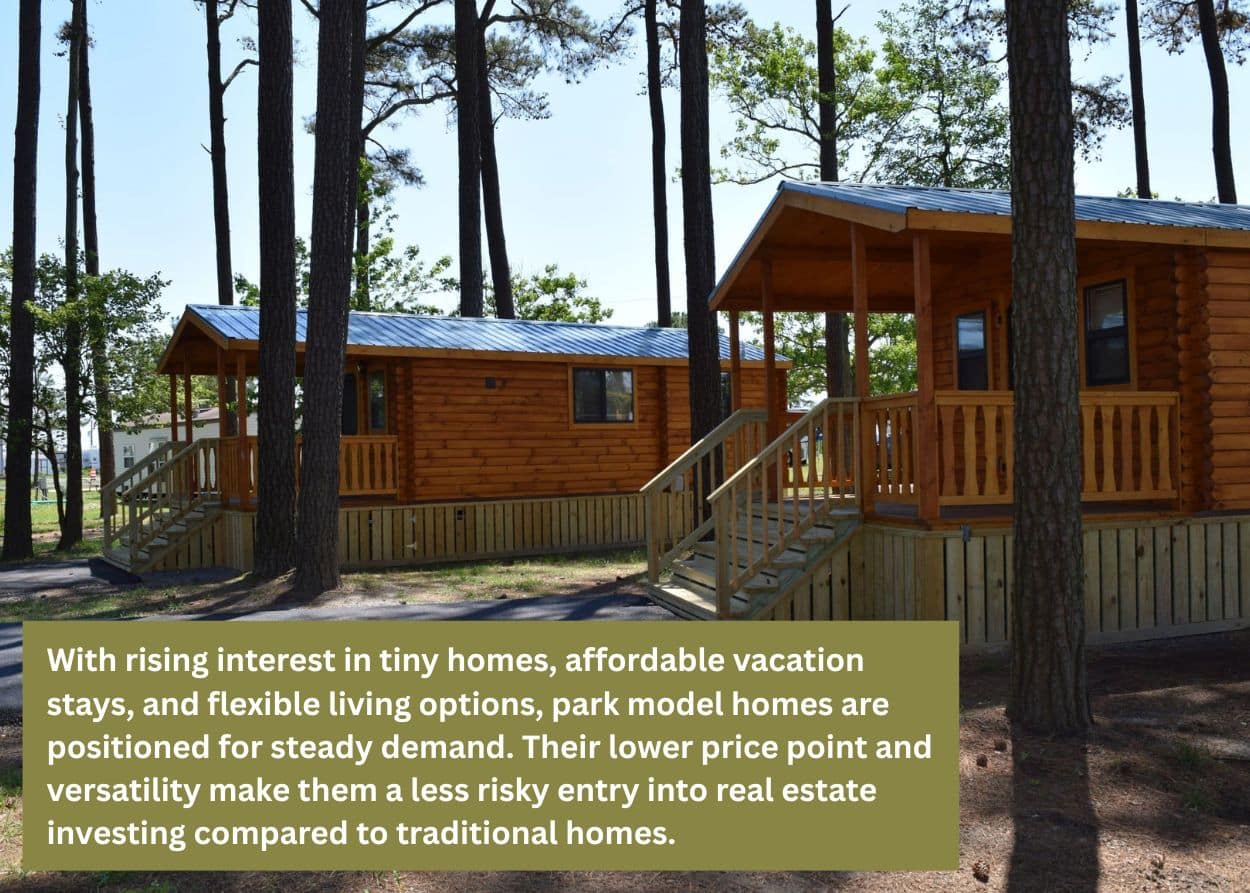
By selecting the correct location, staying ahead of maintenance, and managing rentals professionally, investors can achieve healthy returns and portfolio diversification.
If you’re considering adding park model homes to your investment strategy, Lancaster Log Cabins, renowned for its Amish craftsmanship and nationwide shipping, is a reputable and reliable partner that can help you get started.
Have questions or want to explore models? Contact us to find out more on how you can.
